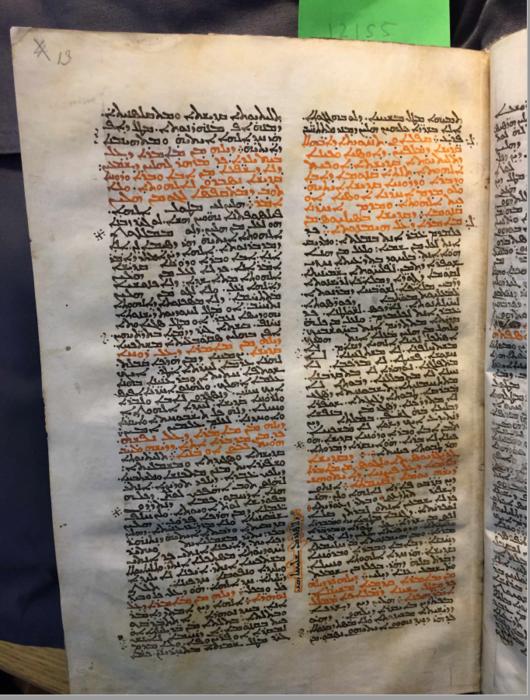A groundbreaking study has emerged from the Digital Humanities Center at the Hebrew University of Jerusalem, shedding new light on the intricate world of Syriac manuscripts. This research, led by post-doctoral fellow Dr. Noam Maeir under the mentorship of Prof. Renana Keydar, focuses on nearly 1,000 manuscripts housed in the British Library. Despite being a lesser-known aspect of literary culture, the editorial practices present in these texts reveal much about the shaping of knowledge in the medieval period. Through the lens of material philology, the study investigates the practice of excerpting, where scribes and editors meticulously selected and rearranged textual passages.
In this extensive analysis, Dr. Maeir introduces an innovative metric known as Excerpts Per Manuscript (EPM). This new measurement serves to quantify the frequency with which these historical scribes, compilers, and other non-authorial agents engaged in excerpting. This approach is transformative; it not only challenges the traditional focus on authorship but also emphasizes the significant contributions of scribes in organizing literary works. By shifting the spotlight away from individual authors, this research underscores the collective nature of manuscript culture.
The study identifies nearly 20,000 excerpts within the digitized catalog of Syriac manuscripts, revealing a rich tapestry of editorial choices and practices. While a majority of manuscripts contain fewer than 20 excerpts, some remarkable texts, produced between the 6th and 9th centuries CE, exhibit a denser concentration of excerpts. Astonishingly, certain manuscripts boast hundreds or even thousands of excerpts. This prevalence of excerpting is not limited to a specific genre; it spans theology, liturgy, and historiography, shedding light on the cultural significance and widespread nature of this practice.
Dr. Maeir’s work emphasizes a crucial point: manuscripts are not mere vessels for preserving ancient texts. Instead, they are complex cultural artifacts, embodying editorial decisions, intellectual trends, and evolving modes of knowledge organization. This perspective transforms our understanding of manuscript culture, framing high-EPM manuscripts as vibrant centers of literary activity. These texts are seen as critical case studies for future research, providing insight into how knowledge was constructed, preserved, and disseminated in Syriac literature.
To facilitate this analysis, Dr. Maeir employs computational tools and the technique of distant reading, which allows researchers to examine large volumes of texts without being constrained by traditional classifications such as genre or historical period. This methodology opens new avenues for mapping cultural practices across time, providing a broader context for understanding literary traditions. It also addresses the challenges inherent in working with digitized legacy catalogs, such as those maintained by the British Library. While the 19th-century catalog remains an invaluable resource, its author-centric framework often overlooks the crucial contributions of non-authorial figures.
The digitization and tagging efforts by platforms like Syriaca.org have significantly enhanced the accessibility of these texts, enabling researchers to reinterpret historical data in ways that bolster the study of material philology and editorial practices. Digital humanities centers, like the one established at the Hebrew University four years ago, have become vital assets in this exploration. They offer computational resources to humanities scholars, integrating advanced digital tools into the study of humanistic research.
Through this comprehensive exploration of excerpting practices, Dr. Maeir’s research not only augments our understanding of Syriac manuscripts but also invites a re-evaluation of editorial practices in the broader field of literature. As the study’s findings highlight the significant role of scribes, it fosters a more inclusive view of literary history—one that recognizes the collaborative efforts that shaped texts over time. This shift in perspective is timely, as the academic community increasingly embraces interdisciplinary approaches to scholarship.
In an era where digital tools are reconfiguring traditional research paradigms, the methodologies employed in this study stand out as exemplary. By utilizing computational techniques alongside traditional philological methods, Dr. Maeir has crafted an innovative framework for analyzing literary practices. This integrated approach not only enriches the study of Syriac manuscripts but also provides a template for future investigations into similar literary traditions across diverse cultures and languages.
As this research continues to unfold, it holds the potential to revolutionize our understanding of how textual practices interplayed with cultural and historical contexts in the medieval world. Each manuscript offers a unique glimpse into the past, revealing the complexities of authorship, editorial choices, and the cultural dialogues that shaped literary works. The implications of this study extend beyond the realm of Syriac manuscripts, inviting scholars from various fields to reconsider how knowledge has been curated and communicated throughout human history.
In conclusion, Dr. Maeir’s pioneering research on excerpting practices within Syriac manuscripts exemplifies the dynamic intersection of digital humanities and material philology. By focusing on the collaborative nature of text production, this study underscores the necessity of recognizing diverse contributors to literary history, ultimately enriching our understanding of how knowledge is constructed and transmitted across generations.
Subject of Research: Editorial practices in Syriac manuscripts
Article Title: Material philology and Syriac excerpting practices: A computational-quantitative study of the digitized catalog of the Syriac manuscripts in the British Library
News Publication Date: 31-Mar-2025
Web References: 10.1371/journal.pone.0320265
References: None available
Image Credits: British Library, London
Keywords: Digital publishing, Cultural practices, Digital data, Scientific approaches, Archaeology, Computational social science, Linguistics




